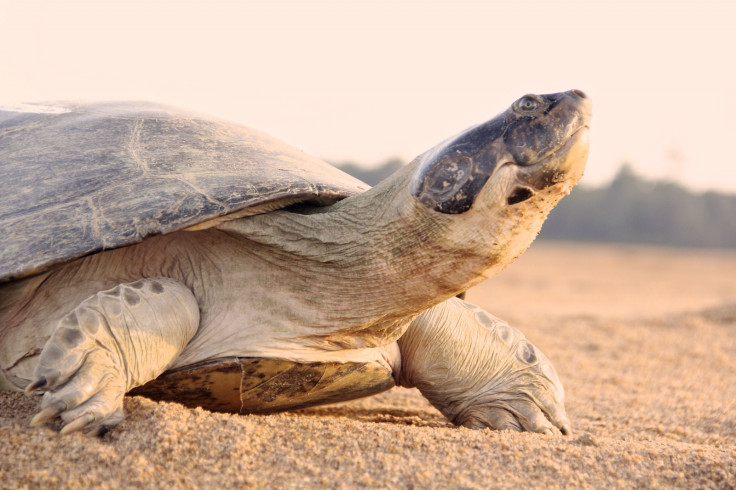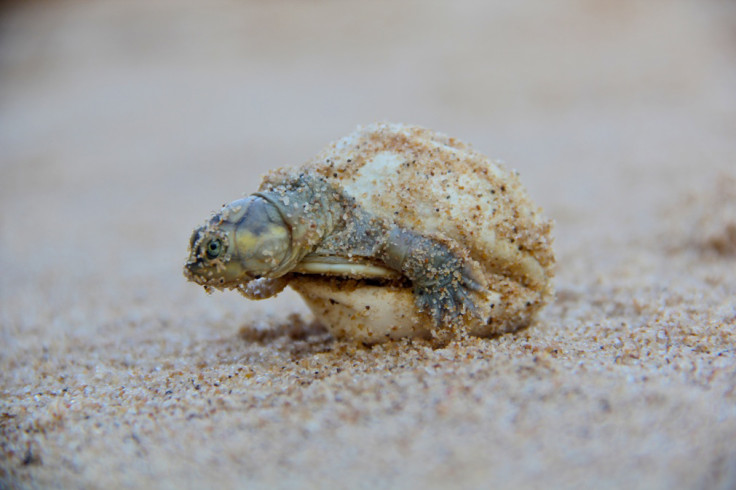Brazil: Giant South American River Turtles Talk to Each Other, Study Finds

Giant South American river turtles talk to each other, with a range of vocalisations for different situations, scientists have discovered.
The 'talking turtles' were studied by experts working in the Brazilian Amazon, who found they use several different kinds of vocal communication to coordinate their social behaviours.
Published in the journal Herpetologica, experts believe the vocalisations are used to stay together and look after the young. Findings showed one of the sounds was used by female turtles to call their newly-hatched offspring – the first time this has been witnessed in turtles.
The study, led by the Wildlife Conservation Society (WCS), found that sounds made when turtles were migrated through the river tended to be low frequency, which could be to allow contact over long distances. During nesting, vocalisations tended to be higher frequency, which travel better in shallow water and air.

Camila Ferrara, an aquatic turtle specialist from the WCS, said: "These distinctive sounds made by turtles give us unique insights into their behaviour, although we don't know what the sounds mean. The social behaviours of these reptiles are much more complex than previously thought."
Researchers recorded 270 individual sounds, making 220 hours of recordings over three years. They divided them into six different types of vocalisation.
The highest diversity was among females about to nest, suggesting these sounds are used to decide on a specific nesting site to synchronise movements – turtles leave the water in a single file procession.
Giant South American river turtles are the largest of the side-necked turtle family, growing up to 80cm in length. They are only found in the Amazon River and are a threatened species. "Groundbreaking studies such as this one can help us better understand the complex relationships between both individual animals and their environment," said Julie Kunen, executive director of WCS's Latin America and the Caribbean Programme.
"Protecting the still sizable populations of Giant South American river turtles will also enable us to conserve the behavioural richness of these reptiles for future study."
Click here to be taken to the sound recording of a turtle talking.
© Copyright IBTimes 2025. All rights reserved.






















